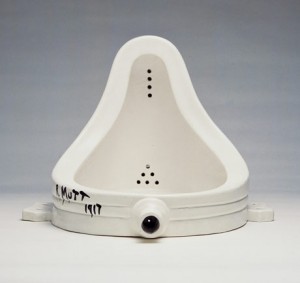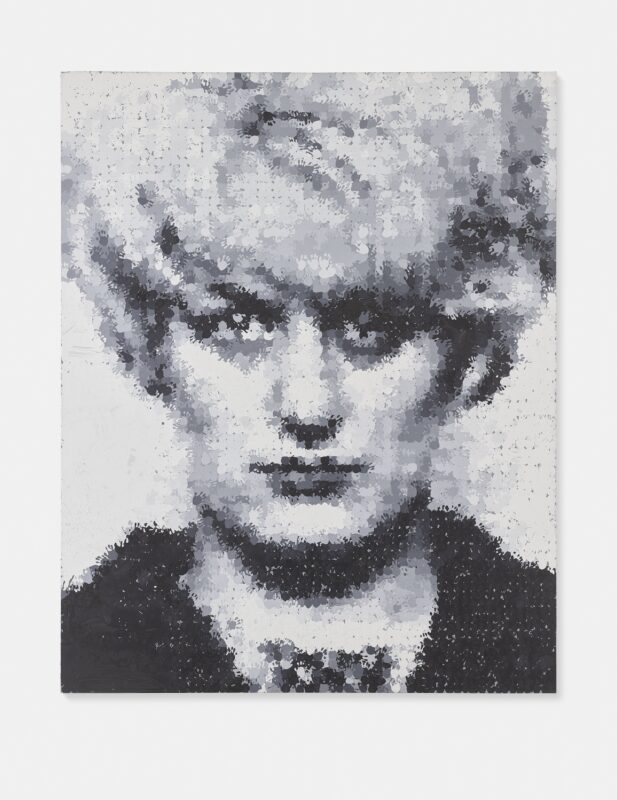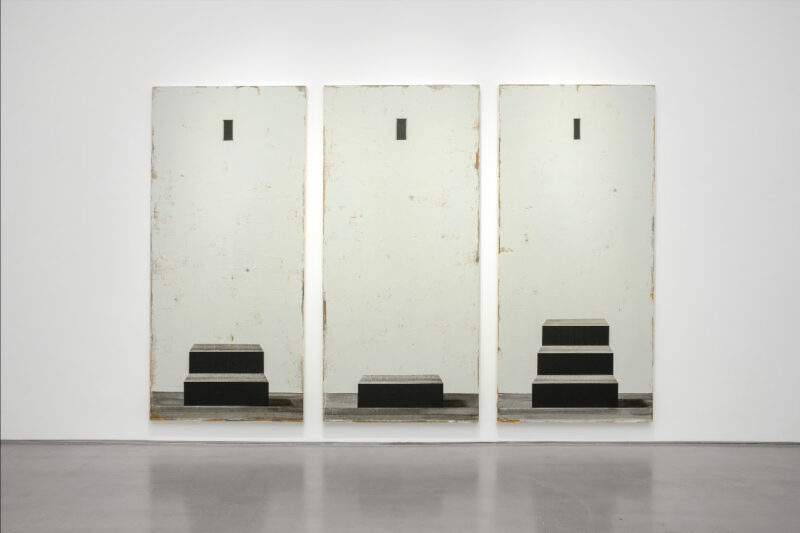
One of the most important interventions in art history is built upon a myth. It is often cited as a revolution or used as a catch-all example when there’s nothing left to say. It sits there brooding quietly in a corner of Tate Modern; it knows that you valorise it and it knows that you don’t know the half of it. Duchamp’s Fountain is not quite what it seems, and for that very reason is more important and ground-breaking than we had imagined.
The story is well known. In 1917, Duchamp bought a standard Bedfordshire model urinal from a New York ironmongers’ store. Struck by the aesthetic of this everyday utilitarian object, he turned it on its back, signed it ‘R Mutt 1917’ in black pen and submitted it to the Society of Independent Artists open exhibition. The committee, of which Duchamp was a member, rejected the work, despite the fact that the only condition for inclusion was payment of the $6 fee, which R Mutt had done.
Duchamp kept quiet about Mutt’s identity and watched as a fierce debate raged: it was thought indecent and an affront to the nobility of fine art being as it was an everyday bathroom appliance. It is difficult now to imagine, still less to empathise with, the outrage, but at that moment, nothing like it had been done before. In some versions of the story, the work was hidden behind a screen in the exhibition, as a half-hearted concession to its democratic principle. In any case, the public never set eyes on it.
The next chapter in the story is perhaps lesser known, judging by the way it is often glossed over in aesthetics classes. An undefeated and good-humoured Duchamp could not let this work – which he, after all, thought to be a cataclysmic breakthrough – go unnoticed, so he took Fountain to be photographed by Alfred Stieglitz. The picture was published in avant-garde magazine The Blind Man, along with a letter from Stieglitz and articles by artist Beatrice Wood and art collector Walter Arensberg, having already had its initial scandal gleefully publicised by the New York Dadaists. It was an anonymous editorial, believed to have been written by Wood (who was, incidentally, in love with Duchamp), that would spell out the artistic revolution. The editorial stated: ‘Whether Mr Mutt made the fountain with his own hands or not has no importance. He CHOSE it. He took an article of life, placed it so that its useful significance disappeared under the new title and point of view – created a new thought for that object’.
And here one story ends and another begins. Art would never be the same again; the river of creativity had burst its banks, flooding the cultural and intellectual landscape with the possibility of a new art. Practically everyone in art today, theorists and practitioners alike, owe some debt to Duchamp, even though it is so entrenched in the canon now that we hardly consider it with more than a vague sigh.
The affect of Fountain on art was both radical and slow-burning. On the one hand, it sent waves from New York to Europe, seriously questioning the limits of art itself, which was defined academically by painting and sculpture, and still just trapped in a paradigm of mimesis. Duchamp’s great coup was to move art away from traditional notions of craft in making objects and towards art as an intellectual, rather than purely visual, exercise. Fountain thus began conceptual art.
On the other hand, although Fountain is now credited as the start of something it would take the best part of fifty years to change the face of art completely. It was not until art had passed through surrealism, Cubism and abstract expressionism that it would reach its terminal crisis: Clement Greenberg’s vision of pure modernist painting as the saviour of art ground to a halt, leaving a void which would ultimately be filled with minimalism and pop art. Duchamp was the immediate precursor to Danto’s much-discussed anything goes, post-historical conceptually driven artworld that would characterise the ‘end of art’. Duchamp was the twinkle in the eye of the pop artists who levered us out of a defunct modernism and finally into a world that spawned the YBAs.
Duchamp also provided a fresh challenge to agitated efforts to philosophically describe the nature of art. At the turn of the century, philosophers turned their attention away from questions of beauty and towards the definition of art itself. In 1914, Clive Bell defined art as ‘significant form’ with an emphasis on aesthetic experience, which was contested by Wittgensteinians like Kennick and Weitz, and later by RG Collingwood, who said that art is only the expression of emotion. But by challenging the nature of art, Fountain also presented a challenge to philosophical definitions – how this object could be a work of art could not be comfortably subsumed under any answer to the question of what art it is. It was not until Danto’s theory of the Artworld or Dickie’s Institutional Theory that Fountain found a place in philosophy and retroactively became the starting point for a new philosophical aesthetics.
The readymade was born with Fountain, which changed the way artists make work and theorists think about it. But although the story of Fountain continues in the mere existence of art, R Mutt’s intervention has another, much less widely known, chapter. There are 17 versions of Fountain, 15 of which survive today, the original having been discarded as quotidian rubbish. In 1950, Duchamp sanctioned a copy of the original for an exhibition in New York; he did the same in Paris in 1953, which went missing, and in Stockholm in 1963. Then, in 1964 (perhaps not coincidentally the same year as Warhol’s Brillo Boxes), Duchamp permitted his Milan gallerist Arturo Schwarz to produce an edition of 8, with 2 artists proofs, 2 exhibition copies and 1 prototype model. All 16 are exact replicas of the original Bedfordshire model, with the signature of R Mutt reproduced in black paint.
The epic climax of this story is that the history of modern art, indebted to and almost theologically predicated upon the history of the readymade, is founded on a myth. That urinal in Tate Modern, and its counterparts all over the world, the first, archetypal readymade that inspired so much art and such a rich intellectual tradition, is a specially made, hand-crafted sculpture of an everyday object. The 16 replicas were fabricated by artisans in the standard tradition of editioned sculpture.
So Duchamp didn’t just do what we think he did. In fact, he laid the bedrock of the contemporary artworld, and he let Warhol take the credit and Hirst take the blame. A work of art that is nearly 100 years old begins to feel eerily contemporary once we consider that it prefigured the particular production and dissemination that characterises a great deal of contemporary commercial art. Fountain is the charming simulation of a readymade, which was mass-produced by someone other than the artist in order to be dispersed, carrying with it the illusion of uniqueness and the mythology of its creation.
Fountain was the first great myth of modern art, enacting the truth of its intellectual importance through an illusion of physical being. A readymade object that was already made to imitate reality, something disarmingly ordinary concealing something completely exceptional. Duchamp was ahead of his time in 1917, but a stroke of genius in 1950 set the ball rolling for an advance that would obliterate the aura of art forever, opening the door for Warhol, Koons and Hirst to make millions from manufacturing wonder. Fountain – a modern artistic statement, made with an age-old commitment to mimeses, repeated and distributed all over the world – turns out to be the first postmodern artwork before modernism had even reached its peak.
Words: Daniel Barnes







